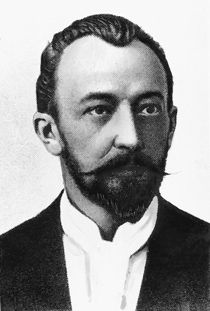

 Alfrēds Ašenkampfs
Alfrēds Ašenkampfs
In 1893, he graduated from Riga Polytechnic Institute and was a practicing architect. There are about 15 multi-storey stone buildings constructed in Riga to his designs. Together with architect Max Scherwinsky he was one of the authors of the architectural image of the 700th Anniversary Exhibition. This exhibition occupied the Esplanade square in the very centre of the city the entire summer of 1901. Everything at the exhibition – starting from the architecture of numerous pavilions and ending with the display cases and the objects exhibited in them – were the embodiments of the new style that considerably shaped the further development of the building art of Riga. Already back in 1904, Latvian journalist and art critic Jānis Asars noted that the appearance of Riga had undergone great changes, adding: “This taste that has become widespread in Riga, particularly owing to the 1901 Anniversary Exhibition, is really something new”. (Mākslas amatniecība (Art and Craftsmanship). Asars J. Collected Works. Vol.1, Issue 3. Riga, 1910, p. 3). Aschenkampff was the author (in partnership with M. Scherwinsky) of the first Art Nouveau building in Riga, namely, the apartment house with shops at Audēju iela 7 (1899). He was also the author of one of the first Art Nouveau wooden houses built at Kristapa iela 2/4 (1904).